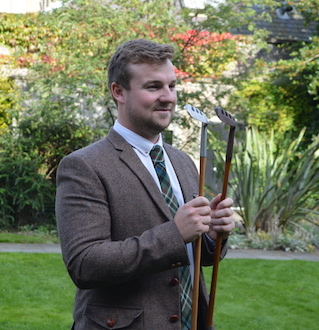As some of the world’s top golfers prepare to descend upon Scotland for the 2014 Ryder Cup, researchers from the University of Dundee are celebrating the game’s history with the use of the latest technology.
They have produced the world’s first metal 3D-printed clubhead using irons loaned by the British Golf Museum in St Andrews.
The University’s division of Mechanical & Electrical Engineering teamed up with St Andrews Golf Co. to investigate the process of making high quality, authentic examples of historically important irons, woods and putters using traditional craft methods.
Today’s clubs are created in such a manner that they can be manufactured with ease on modern machinery. St Andrews Golf Co. is the only company in the world to still practice the craft of producing golf clubs by hand, which was once popular across Britain, but has now almost disappeared due to the adoption of modern, digital based production methods.
The company’s Grant Payne, a Product Design graduate of the University, used his skills to convert physical to digital and back again. After 3D scanning the clubs, he used specialist programmes to make accurate digital models of the clubs.
The Mechanical Engineering team then worked with colleagues in academia and industry to ready the model for printing in metal. The clubhead was recreated exactly, including dents, patina & damage collected over its 125 year life.
Grant says the project will hopefully protect these examples of rare and ancient golf clubs, as they are irreplaceable artefacts of great importance to Scotland’s cultural and manufacturing heritage.
“We are delighted to have assisted in the production of the world’s first metal 3D-printed clubhead. The avenues opened up by combining the latest in manufacturing technology with the traditional craftsmanship practiced by St Andrews Golf Co Ltd are exciting. It was only made possible through our Industrial Partnership with the University and we hope it will demonstrate to people we’re thinking about the future, whilst being considerate of the past.” he said.
Read more at ENGINEERING.com


